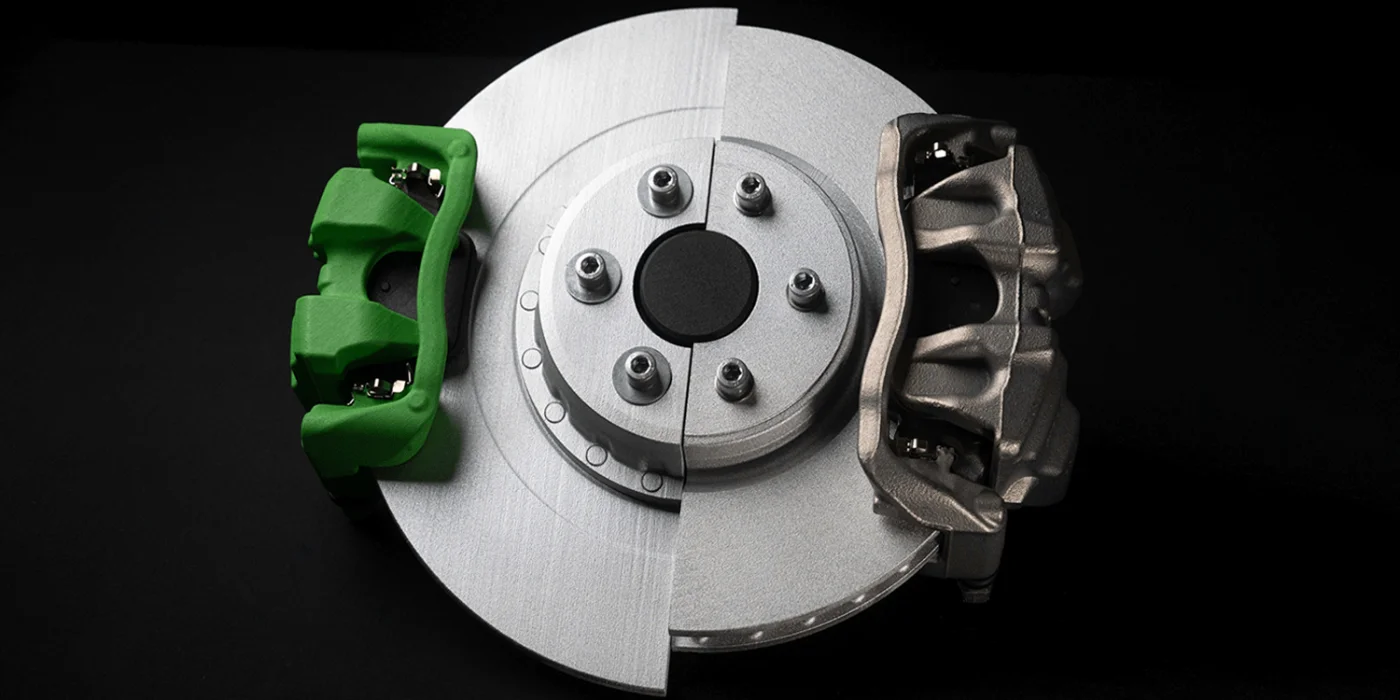EV Lifespan: Do They Last as Long as Gasoline Cars?
Much like when gasoline and diesel vehicles were first introduced, the public was skeptical—especially those used to horse-drawn carriages. Today, battery electric vehicles (EVs) are facing similar criticism. But will EVs have the same longevity on the roads as their gasoline and diesel counterparts? Without a doubt, they will, and automakers are already making strides to ensure this happens.
Myth Busted: Neither Electric Vehicles Nor Gasoline Cars Are Flawless
The reality is that no vehicle—whether powered by electricity or gasoline—is perfect. Both have strengths and weaknesses. However, one undeniable fact is that cars, in general, are lasting much longer than they used to. Since the first automobiles rolled off production lines and hit the roads, their average lifespan has been increasing steadily.

Take, for example, the historical data: In 1977, the average car on the road in the United States was only 5.5 years old. Fast forward to 1995, and that number had grown to 8.4 years. By 2020, the average vehicle age had reached an impressive 11.9 years. This reflects a broader trend in the automotive industry: modern cars are built to last longer, thanks to technological advancements and better materials.
Car buyers today—whether they opt for an EV or a traditional gasoline vehicle—expect their investment to be reliable, safe, and efficient for many years. They expect that, if properly maintained, their vehicle will serve them well for 10, 15, or even 20 years down the road.
Why Electric Vehicles Could Have an Edge in Longevity
While no vehicle is invincible, electric vehicles have a few advantages that may give them a longer lifespan compared to traditional gasoline cars. For one, EVs have fewer moving parts. A gasoline engine has hundreds of parts that can wear out over time, including the fuel system, exhaust components, and engine belts. EVs, on the other hand, rely on simpler electric motors, which tend to have a longer operational life and require less maintenance.
Furthermore, electric vehicles don’t have issues like oil changes, transmission problems, or exhaust system failures, which are common in gasoline vehicles. With fewer components to break down, EVs might require fewer repairs over their lifetime.
However, the most significant question mark around EV longevity revolves around the batteries. Currently, most EV batteries are designed to last 8-10 years, but with advancements in battery technology, their lifespan is expected to improve, making EVs even more competitive in terms of durability and long-term value.
Key Component Life Expectancy of Electric Vehicles
When deciding between an electric vehicle (EV) and a conventional gas-powered vehicle, many components can be left out of the longevity comparison since they are similar in both types. These shared components include:
- Vehicle Frame and Body :Modern car bodies typically last the entire lifespan of the vehicle, though factors like weather conditions can affect their durability.
- Electrical Systems : Parts such as the radio, navigation systems, headlights, and power windows usually function for over 10 years.
- Steering and Suspension : Parts such as the radio, navigation systems, headlights, and power windows usually function for over 10 years.
- Tires : Depending on how the car is driven and the alignment maintained, tires generally last around 4 to 5 years.
- Wipers and Cabin Filters : These need to be replaced every 6 to 12 months, depending on the environment.
- 12-Volt Battery : Both electric and gas cars have a 12V battery, which typically lasts about 5 to 7 years with normal driving.
- Brake System : Brake hydraulics and calipers in both types of vehicles require servicing every two years or so.
However, some important differences exist between conventional vehicles and EVs, especially regarding their powertrains. While gasoline engines, when properly maintained, have a proven track record for longevity, the focus often shifts to EV batteries and motors. These critical EV components, such as batteries, are often viewed with concern due to their cost.
Lithium-ion Battery Packs and Longevity
Although lithium-ion battery packs are costly, they have a long lifespan. On average, an EV battery has been shown to last approximately 200,000 miles, which equates to nearly 20 years of use. Tesla is reportedly working on a battery that could last up to 1,000,000 miles, far surpassing the lifespan of the average vehicle, which is currently around 11.9 years. Over the past decade, major EV manufacturers have reported very few battery replacements, indicating the durability of these systems.
Brake Systems
Brakes in electric vehicles provide an interesting point of comparison with conventional cars. EVs utilize regenerative braking, which reduces the reliance on the hydraulic brake system, leading to less wear and tear. While traditional vehicle brakes typically need replacement between 25,000 and 65,000 miles depending on driving habits and the vehicle type, the brakes on EVs and hybrids tend to last significantly longer. In fact, many EV and hybrid owners report that their brakes can last over 100,000 miles, thanks to regenerative braking.

Importance of EV Maintenance
Electric vehicles have simpler powertrains and generally require less maintenance compared to gasoline vehicles. However, this makes the services they do need even more crucial. How you drive, charge, and maintain your EV will significantly affect its lifespan, much like with a gasoline-powered car. Two key areas to focus on are the cooling system and charging habits.
Keeping the EV’s battery cool is essential for extending its lifespan. A combination of active and passive cooling systems ensures that the battery pack remains at an optimal temperature of around 70 °F. Regular maintenance, such as checking coolant levels and replacing air filters, is important to keep the cooling system in good working order.
Proper charging habits are critical for extending the life of an EV battery. While the Battery Management System (BMS) helps regulate charging rates to prevent damage, you can further protect the battery by primarily using Level 2 chargers for daily charging. Although Level 3 fast chargers are convenient for long trips, frequent use of high-power chargers can reduce the battery's lifespan.
EV Longevity on Par with Gasoline Vehicles
With ongoing advancements in technology, both electric and gasoline-powered vehicles are built to last. With proper maintenance and responsible driving, either type of vehicle can easily last over a decade.
Both the government and automakers have demonstrated their confidence in the durability of EVs. Federal regulations now require that major EV components, like the battery and motor, be covered under warranty for eight years or 100,000 miles. In California, this is extended to 10 years or 150,000 miles. Some EV manufacturers even offer lifetime warranties, which is virtually unheard of for traditional vehicles.
As electric vehicles become more affordable and accessible, choosing not to go electric may eventually seem like a riskier option when considering long-term value. If you're in the market for a new vehicle, it's reassuring to know that you can select whichever option fits your needs, with confidence that both EVs and gas cars will provide reliability for years to come.
Electric Vehicle (EV) Motor
An electric vehicle (EV) motor is the core component responsible for converting electrical energy from the battery into mechanical energy to drive the vehicle's wheels. Unlike internal combustion engines (ICEs) in gasoline or diesel vehicles, EV motors use electricity as their power source, leading to several advantages such as higher efficiency, fewer moving parts, and lower maintenance requirements. Here’s a breakdown of key aspects related to EV motors:
Types of EV Motors
- AC Induction Motors: Popularized by companies like Tesla, these motors use alternating current (AC) and are known for their high efficiency and power output.
- Permanent Magnet Synchronous Motors (PMSM):Common in many EVs, these motors use permanent magnets to create a magnetic field and are efficient at converting energy with minimal losses.
- Brushless DC Motors (BLDC):These motors are often used in smaller electric vehicles and e-bikes, valued for their simplicity and reliability.
How an EV Motor Works
- Electric Power Input: The motor receives electric energy from the vehicle’s battery.
- Magnetic Fields:Inside the motor, a magnetic field is created, either by electromagnets (in induction motors) or permanent magnets (in PMSM and BLDC motors).
- Rotational Motion:The interaction between the magnetic fields causes the rotor (the moving part of the motor) to spin, which drives the wheels of the car through a transmission system.
Benefits of EV Motors
- High Efficiency: EV motors can achieve energy efficiency of 85-90%, compared to 20-30% in gasoline engines.
- Instant Torque: EV motors deliver power instantaneously, providing rapid acceleration and smoother driving.
- Lower Maintenance: With fewer moving parts and no need for oil changes, EV motors are less prone to wear and tear compared to ICEs.
- Regenerative Braking: EV motors can reverse their role to act as generators during braking, converting kinetic energy back into electrical energy, which is stored in the battery.
Electric Vehicle (EV) Transmission
In electric vehicles (EVs), the concept of a transmission is quite different from that of traditional gasoline or diesel-powered cars. Here's an overview of how transmissions work in EVs and why they differ:
Traditional Transmission vs. EV Transmission
- Traditional Vehicles: Internal combustion engine (ICE) vehicles require multi-speed transmissions (automatic or manual) to keep the engine operating within its optimal power range. These vehicles need different gears to adjust the engine's speed and torque for varying driving conditions like acceleration, cruising, or climbing hills.
- Electric Vehicles: EV motors operate differently than ICEs. Electric motors can produce near-instant torque and maintain efficiency across a wide range of speeds. This eliminates the need for a complex multi-speed transmission. Most EVs use a single-speed transmission, also called a direct drive, because the motor's power band is so broad that shifting gears is unnecessary.
Key Differences in EV Transmission:
- Single-Speed Gearbox: Most EVs are equipped with a single-speed transmission that connects the motor directly to the wheels. Since electric motors can operate efficiently at a wide range of RPMs (rotations per minute), there’s no need to shift gears as in a gasoline vehicle. The single-speed gearbox optimizes the motor’s power output for both low and high speeds.
- Simpler Design: A single-speed transmission in an EV is much simpler and smaller than a traditional multi-gear transmission. This reduces mechanical complexity, weight, and the need for regular transmission maintenance, which is common in conventional vehicles.
- Instant Torque: Since EV motors can provide maximum torque instantly from a standstill, there’s no need for the transmission to shift gears to build torque. This results in quicker acceleration and smoother performance.
EV Transmission Operation
- Acceleration: In an EV, when you press the accelerator, the motor sends power through the single-speed transmission to the wheels without the need for gear shifts.
- High Speeds: The motor’s wide power band allows the vehicle to accelerate smoothly and efficiently at high speeds without needing to change gears.
- Regenerative Braking: During braking, the motor can reverse its function to act as a generator, slowing the vehicle down and converting kinetic energy back into electrical energy, which is then stored in the battery. This happens through the same single-speed transmission.
Examples of EV Transmissions
- Tesla: Tesla’s Model S, Model 3, and other models use a single-speed transmission, allowing the electric motor to deliver power efficiently across a wide speed range without the need for shifting gears.
- Porsche Taycan: One notable exception is the Porsche Taycan, which uses a two-speed transmission. The two-speed gearbox is designed to balance both quick acceleration at low speeds and greater efficiency at higher speeds, which is particularly useful in performance-oriented EVs.
Advantages of EV Transmissions
- Simplicity and Reliability: With fewer moving parts, single-speed transmissions are simpler and more reliable than traditional multi-speed gearboxes, which reduces maintenance costs.
- Smoother Driving: The absence of gear shifts means smoother acceleration and deceleration, resulting in a seamless driving experience.
- Cost-Effective: Fewer components in the transmission system reduce the cost of both manufacturing and maintenance.

.png)